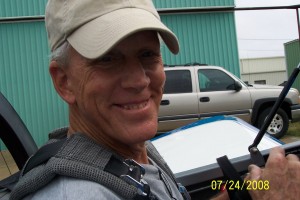 My wife and I enjoy flying to small airports with restaurants for what pilots commonly refer to as the “$100 hamburger.” Yesterday’s gorgeous weather lured us to the San Marcos Municipal Airport, where we got in our RV-6 and took off for the Gillespie County Airport in Fredericksburg, Texas, to have a “$100 breakfast.”
My wife and I enjoy flying to small airports with restaurants for what pilots commonly refer to as the “$100 hamburger.” Yesterday’s gorgeous weather lured us to the San Marcos Municipal Airport, where we got in our RV-6 and took off for the Gillespie County Airport in Fredericksburg, Texas, to have a “$100 breakfast.”
Like San Marcos, Gillespie County is a “non-towered” airport. We used to call them “uncontrolled,” but the Federal Aviation Administration discourages that. I suppose it’s because the term implies the lack of power to “influence or direct people’s behavior or the course of events,” hardly what the FAA has in mind. Whatever you choose to call them, these airports don’t have anyone on the ground directing the actions of airplanes operating on the ground or in the traffic pattern. It’s up to the pilots.
But that doesn’t mean anything goes. Thousands of words have been written about how pilots should operate their airplanes in the absence of a traffic controller telling them what to do. And yet in spite of that, the variation is often astonishing, and sometimes dangerous.
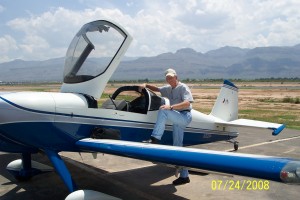 Our plans for breakfast ran into an obstacle before we landed at Gillespie County. A standard procedure is to monitor the published common traffic advisory frequency (CTAF) when within 10 miles of the airport. I usually tune the radio to the CTAF at about 20 miles, which allows me to assess the amount of traffic in the pattern well before arrival. In this case, there wasn’t much going on, which should have been my first clue. Nice Saturday mornings usually draw lots of hungry pilots and passengers to Gillespie.
Our plans for breakfast ran into an obstacle before we landed at Gillespie County. A standard procedure is to monitor the published common traffic advisory frequency (CTAF) when within 10 miles of the airport. I usually tune the radio to the CTAF at about 20 miles, which allows me to assess the amount of traffic in the pattern well before arrival. In this case, there wasn’t much going on, which should have been my first clue. Nice Saturday mornings usually draw lots of hungry pilots and passengers to Gillespie.
Then I heard one pilot ask another if the diner was open and learned that it was closed for a Texas Ranger wedding, whatever that is. The pilot said the diner didn’t even offer him a cup of coffee. I’m not in the habit of calling in advance to confirm the hours of airport restaurants, but that’s going to change.
The Brenham Municipal Airport’s Southern Flyer Diner is another of our favorite destinations, so I reversed course and entered the new destination into my trusty navigation system. About 40 miles out, I tuned the radio to Brenham’s CTAF and immediately concluded that all the traffic that would normally have gone to Gillespie had diverted there. The frequency was filled with chatter, and I had about 10 minutes to listen before I needed to join in the fray.
I’m guessing that half the airplanes had idiots at the controls. I’ve seldom heard so much radio garbage in so short a time. And the vast majority of it resulted from pilots saying things that never need to be said or saying it in the most verbose way possible.
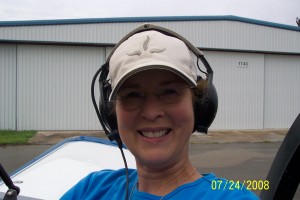 A standard radio call has a format that works. You wait for a clear frequency, key the microphone and tell everyone who you are talking to, who you are, where you are, what your intentions are, and then end the transmission with who you are talking to. Specific terms familiar to pilots allow shorthand to minimize the time it takes to communicate this information quickly and efficiently. Here’s an example of an initial “announcement” I might make when approaching Brenham from the west with the intention to land there: “Brenham traffic, RV 221 Papa 10 miles west passing 3,500 feet for left downwind entry to runway 14 full stop Brenham traffic.”
A standard radio call has a format that works. You wait for a clear frequency, key the microphone and tell everyone who you are talking to, who you are, where you are, what your intentions are, and then end the transmission with who you are talking to. Specific terms familiar to pilots allow shorthand to minimize the time it takes to communicate this information quickly and efficiently. Here’s an example of an initial “announcement” I might make when approaching Brenham from the west with the intention to land there: “Brenham traffic, RV 221 Papa 10 miles west passing 3,500 feet for left downwind entry to runway 14 full stop Brenham traffic.”
Similar radio calls at standard points in the traffic pattern keep every other pilot on frequency informed of your progress from initial contact to landing. The most important end result of this process is for pilots to “see and avoid” other airplanes in the traffic pattern. Airplanes already established in the pattern have the right-of-way, so it’s the responsibility of inbound pilots to find the “empty” spots. The consequences of finding a “full” spot are obvious.
Yesterday at Brenham, it was as if a black hole of stupidity had centered itself over the airport. Here are some examples:
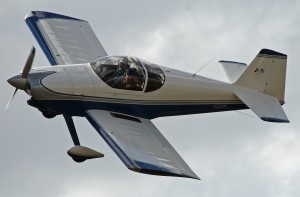 Two pilots were yakking about something that had absolutely nothing to do with landing at Brenham. Another pilot wanted to fly a low approach (high speed pass, whose only purpose is to show off) through the middle of a traffic pattern jammed with airplanes. Another tried to do touch-and-go practice landings, which should be saved for when the pattern isn’t so crowded. A pilot reported preparing to fly a right-hand pattern when standard procedures (and every other airplane in the pattern) was using left-hand traffic.
Two pilots were yakking about something that had absolutely nothing to do with landing at Brenham. Another pilot wanted to fly a low approach (high speed pass, whose only purpose is to show off) through the middle of a traffic pattern jammed with airplanes. Another tried to do touch-and-go practice landings, which should be saved for when the pattern isn’t so crowded. A pilot reported preparing to fly a right-hand pattern when standard procedures (and every other airplane in the pattern) was using left-hand traffic.
Pilots insisted upon identifying themselves with their complete radio call signs, which at a non-towered airport is virtually useless. Even when communicating with an air traffic controller, procedures allow the use of abbreviated call signs, and here, identifying yourself as the “white Cessna” goes a lot farther toward helping other pilots pick you up visually.
One of the yakking pilots had a stuck microphone, which fills the frequency with background noise. Other pilots can transmit over it, but anything said will not be heard by the pilot whose mic is stuck. Every pilot should know that, but someone insisted on trying to call the offending airplane and tell the pilot to check for a stuck mic. This totally useless call does nothing more than put additional garbage on the frequency.
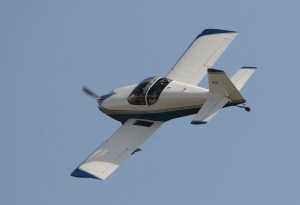 When you press the mic button and begin a transmission with a clear frequency, you have no idea whether another pilot has chosen that exact moment to say something. And during your transmission, it sounds to you just like any other radio call you make. But to other pilots receiving the calls, both come out as a garbled mess. Somebody kept telling us all that “Two pilots are talking at once!” Well, duh. That happens all the time, and making an additional radio call to tell us something we already know and can do nothing about is once again nothing but garbage.
When you press the mic button and begin a transmission with a clear frequency, you have no idea whether another pilot has chosen that exact moment to say something. And during your transmission, it sounds to you just like any other radio call you make. But to other pilots receiving the calls, both come out as a garbled mess. Somebody kept telling us all that “Two pilots are talking at once!” Well, duh. That happens all the time, and making an additional radio call to tell us something we already know and can do nothing about is once again nothing but garbage.
I must be living right, or maybe the detour west to Fredericksburg was preordained, but by the time I reached pattern altitude and had closed to about 5 miles from the airport, the frequency fell silent. I actually checked the squelch on my radio to confirm it hadn’t quit. Maybe grumbling to myself had something to do with it, but the pattern was empty of airplanes when I landed. As usual, the food was excellent, and the vanilla malts don’t come any better.
And for you non-flyers, two fly-in meals don’t cost $100. Paying for aviation gasoline is a different story, however, but I’ll leave that topic for another time.


